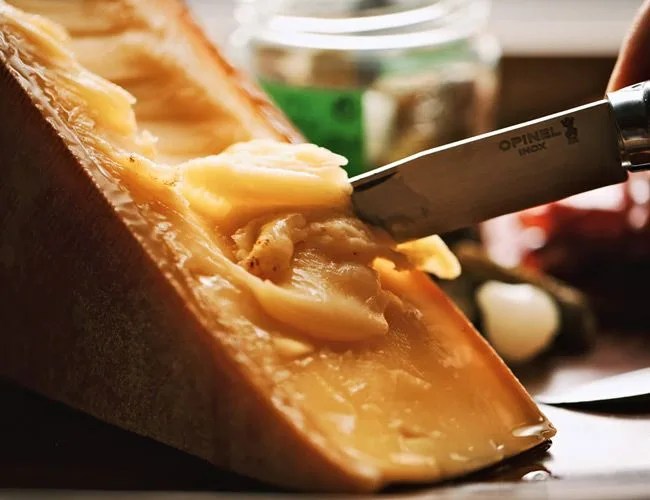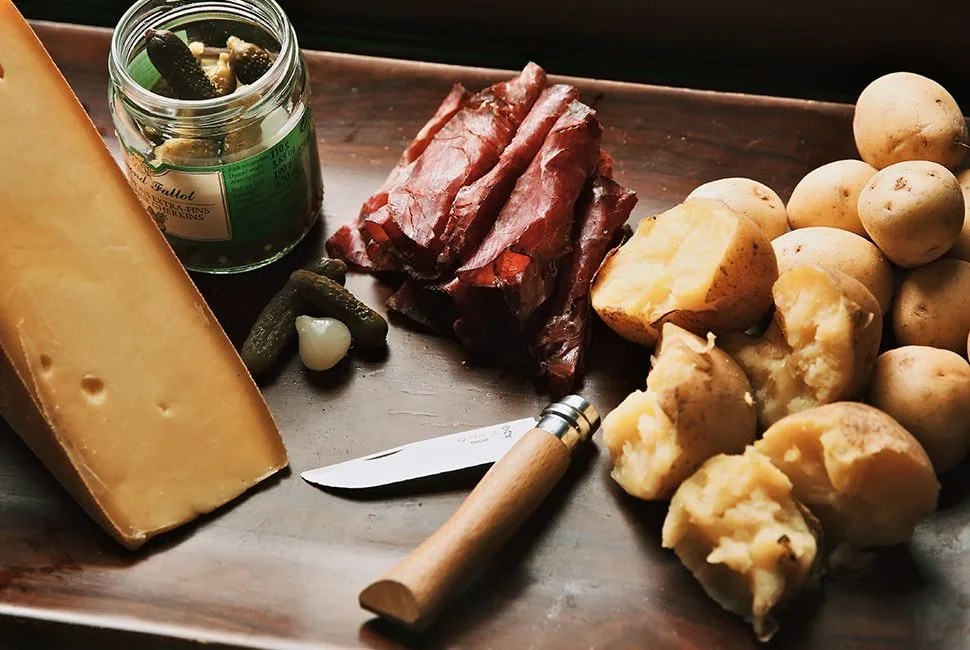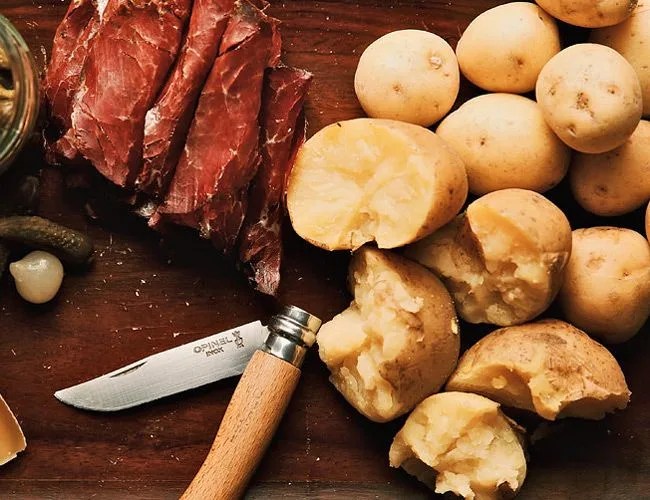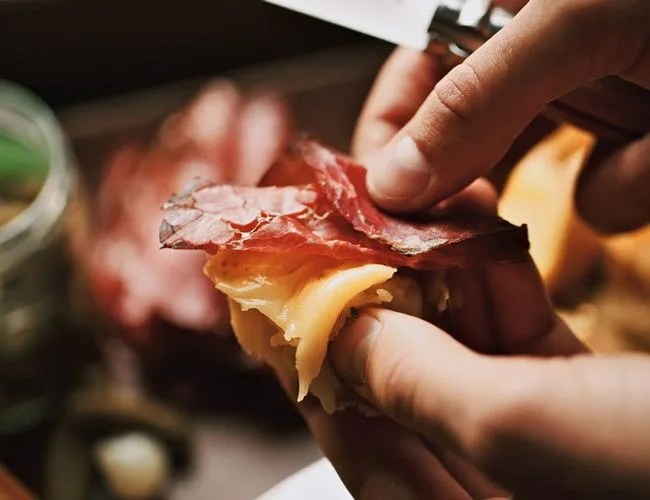There’s not a culture in the world devoid of social gatherings built around food. Some of our more recent traditions of the sort include food truck festivals, the eternal search for the best local taco, chip and dip orgies during the Super Bowl, and an entire nation obsessed with eating KFC on Christmas (yes, you, Japan). Others, like thronging around a melting wheel of cheese for a raclette party, date back much further.
Raclette belongs to a category of terms that define both a specific thing (in this case, a stinky, but absurdly delicious variety of cheese) and an action: melting, scraping, and consuming said cheese, often with voracious tendency. From the French verb racler (“to scrape”), raclette became a thing sometime around the 12th or 13th centuries, originating in the mountainous region of present-day Valais, a canton of Switzerland bordering both France and Italy.
It’s said that the meal was a common dinner staple for alpine cattlemen in the region. Commonly conceived is that these herders, after a long day of labor and travel, would settle around campfires for the night to stay warm. With only raclette and a handful of potatoes at their disposal (and possibly some pickles and a slice or two of dried beef had fortune smiled on them), they would melt their cheese on nearby rocks and place it on the fare, resting easy with their stomachs somewhat full and some decent company, at least.
Today, raclette has landed stateside as the blue-collar alternative to fondue; some even refer to it as “instant fondue”, alluding to its ease of consumption: simply melt atop potatoes and you’ve got a party. Modern interpretations of the meal even have their own conventional machines, and feature grill tops for different avenues of gastronomic exploration, including fresh vegetables and meats for any season. We recommend you save your money on these gadgets, buy a torch ($15+), and focus on sourcing the quality essentials — cheese, potatoes, meat, and pickles — the next time you and your friends are craving peasantry. Make those Swiss cowboys proud.
The Cheese

A majority of raclette-style cheese found in the U.S. is still from Switzerland or France (made from cow, sheep, and goat’s milk), but domestic varieties are beginning to challenge the foothold of their imported counterparts. Leading the charge is the Reading Raclette from Spring Brook Farm in Vermont, a raw-milk cow’s cheese, produced in 20-pound wheels from a small, grass-fed herd raised on location. Though softer than a traditional raclette, the cheese has that familiar sweet and buttery profile when melted. It’s aged 3-6 months and features a washed and very palatable rind (so don’t be shy about eating the whole thing). As for alternatives, Jarlsberg, Emmentaler, and Gruyère melt well, and pair nicely with potatoes and other starches.



